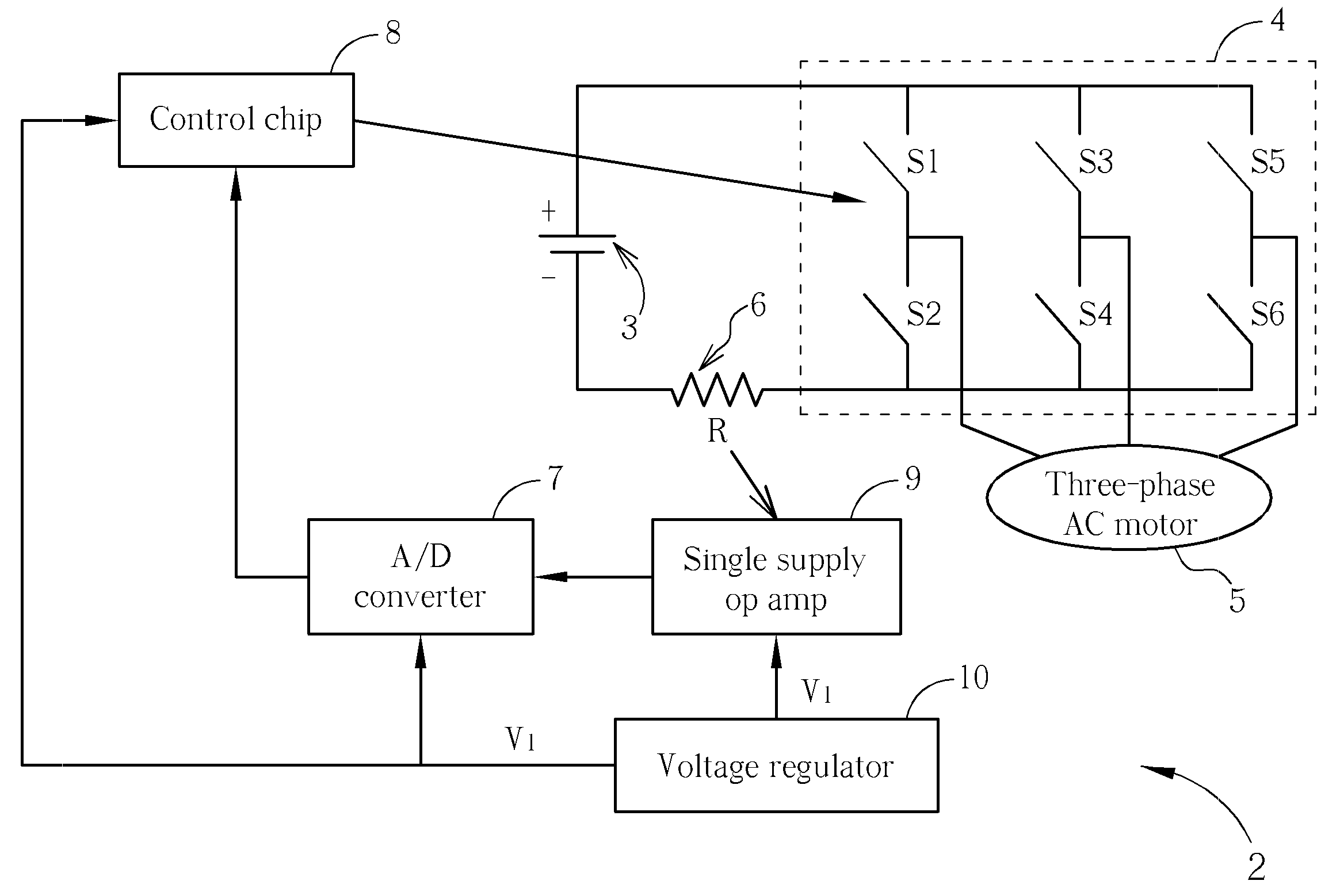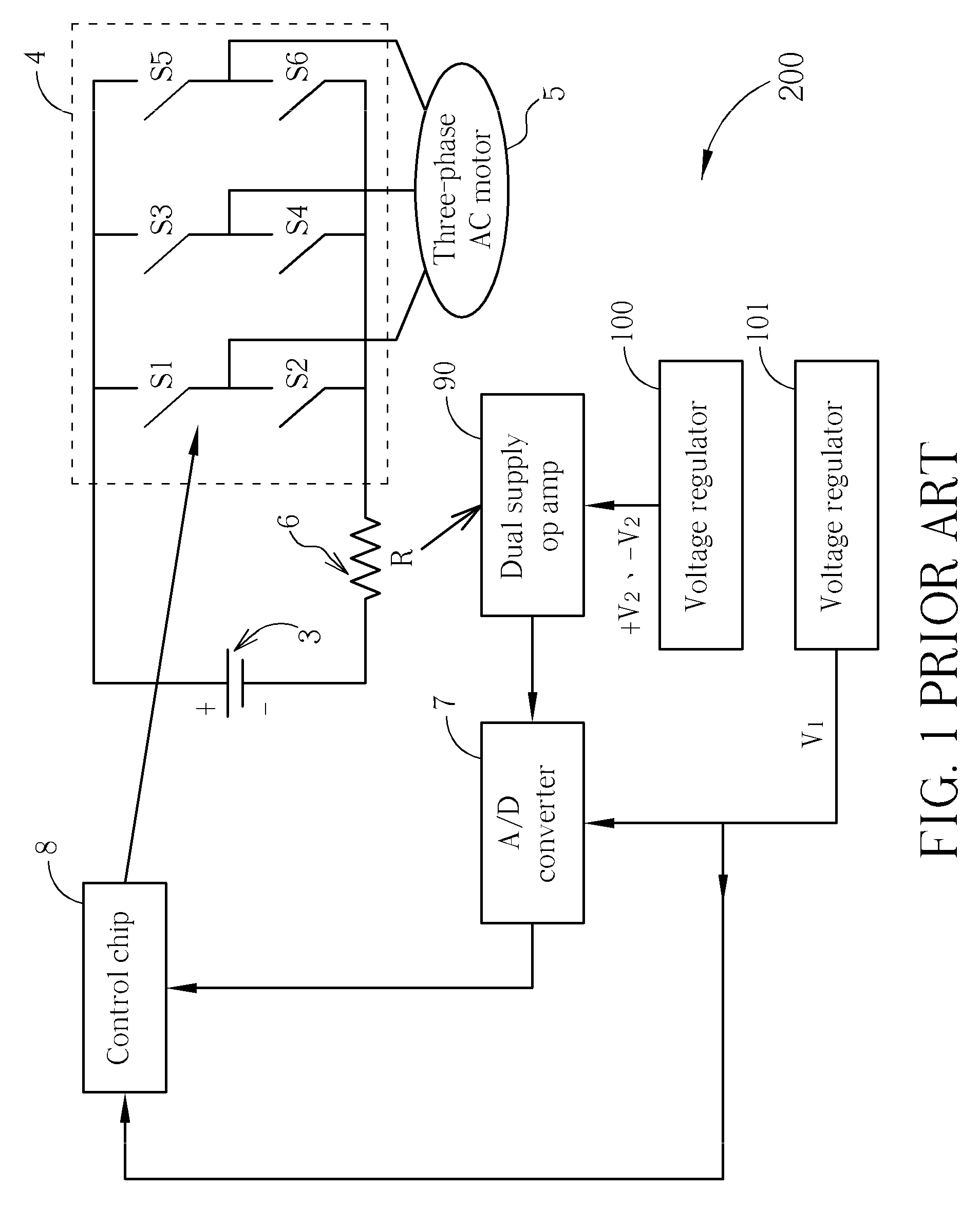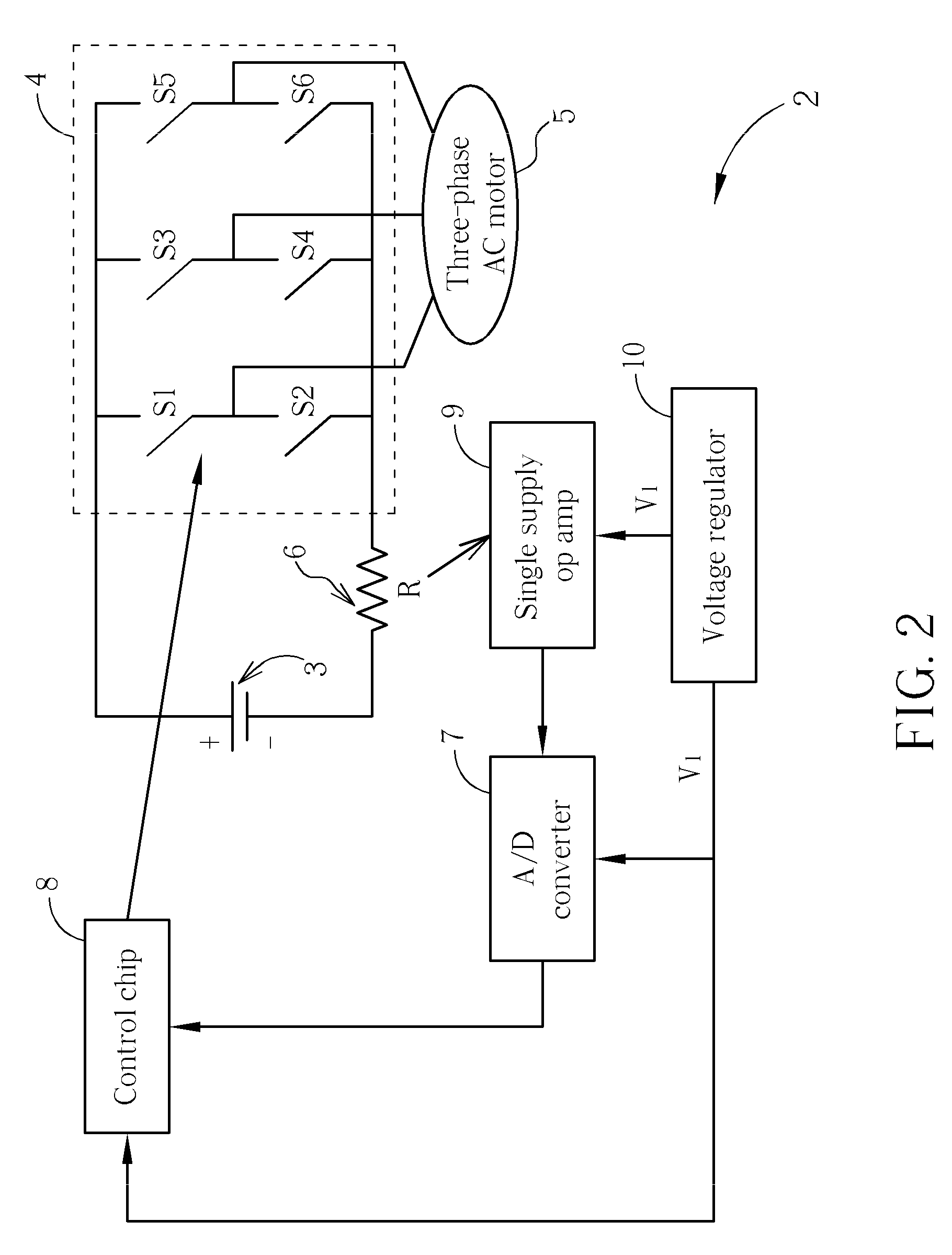To Obtain the Three-Phase Current via adjusting width of pulses with Single DC-Link Current Sensor
a three-phase current and current sensor technology, applied in the direction of electronic commutation motor control, motor/generator/converter stopper, dynamo-electric converter control, etc., can solve the problems of increasing the cost, volume, weight, and size of the circuitry, and the possibility of large estimation errors
- Summary
- Abstract
- Description
- Claims
- Application Information
AI Technical Summary
Benefits of technology
Problems solved by technology
Method used
Image
Examples
Embodiment Construction
[0047]The present invention raises a method for adjusting a width of pulses through collecting information of a three-phase current to overcome disadvantages in the prior art. According to the electrical characteristics of the motors, the present invention adds specific detecting vectors to make the voltage on a DC-link current-sensing resistor a positive value, amplifies and filters the voltage through a single supply op amp, and then utilizes the synchronous sampling technology of PWM to sample voltage signals, subsequently transfers the sampled voltage signals to an A / D converter to retrieve the information of currents in three phases. The present invention will not be affected by the immeasurable region, and has advantages of a simple practical method, a fixed time point of sampling currents, and deriving an average current. The present invention is not only suitable for application in an SVPWM system, but also in an SPWM system.
[0048]Please refer to FIG. 2. FIG. 2 is a schemati...
PUM
 Login to View More
Login to View More Abstract
Description
Claims
Application Information
 Login to View More
Login to View More - R&D
- Intellectual Property
- Life Sciences
- Materials
- Tech Scout
- Unparalleled Data Quality
- Higher Quality Content
- 60% Fewer Hallucinations
Browse by: Latest US Patents, China's latest patents, Technical Efficacy Thesaurus, Application Domain, Technology Topic, Popular Technical Reports.
© 2025 PatSnap. All rights reserved.Legal|Privacy policy|Modern Slavery Act Transparency Statement|Sitemap|About US| Contact US: help@patsnap.com



